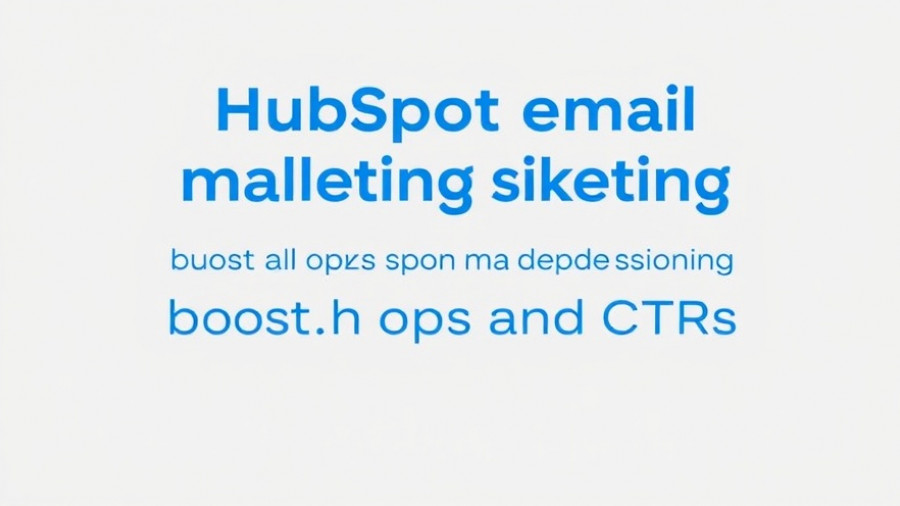
The Vital Role of Email Marketing in Financial Services
Email marketing is increasingly becoming the backbone of communication within the financial services sector. Unlike other industries where immediate sales may take precedence, financial services must build trust and foster long-term relationships. Just as consumers expect personalized experiences in retail, they also anticipate engagement that speaks to their unique financial situations. This evolving landscape, shaped by stringent regulations and rising customer expectations, provides ample opportunity for firms that master email marketing.
Email Marketing Tools that Fit the Financial Services Landscape
With the unique challenges facing financial firms—such as strict compliance and the potential for fines tied to GDPR and CAN-SPAM violations—it’s essential to choose the right email marketing tool. Tools such as HubSpot, known for its user-friendly interface and capability to streamline communications without overwhelming feature sets, emerge as frontrunners. In fact, financial companies that have adopted dedicated platforms for email marketing often see ROI soaring as high as 4,200%, proving that every dollar invested yields significant returns.
Understanding Your Audience
Creating effective email campaigns starts with understanding who your clients are and what they need from your firm. Evidence suggests that modern consumers—especially millennials—are more responsive to companies that adopt a personalized approach. Financial institutions that leverage customer data, such as transaction history and life events, can achieve higher engagement rates. By segmenting lists based on these aspects, firms can send timely, targeted communications that speak directly to their clients’ needs.
The Most Effective Tools for Financial Marketers
According to recent insights, the top email marketing tools for 2025 cater not only to email campaigns but also integrate with CRM functionalities, enabling comprehensive data management. Here’s a snapshot of the best tools:
- HubSpot: Exceptional for its all-in-one marketing suite and strong CRM capabilities, making it ideal for financial firms.
- Mailchimp: Useful for small to midsize practices, offering automation features that help maintain client relationships year-round.
- ActiveCampaign: Equipped with advanced automation, this platform helps segment client relationships effectively.
- Constant Contact: Notable for user-friendliness, it provides robust support to ensure firms navigate email marketing seamlessly.
- Emercury: Especially tailored for the financial sector, this service emphasizes deliverability and human-based support.
Crafting Compliant, Engaging Emails
Successful email marketing goes beyond sending newsletters to your clients. These communications must align with regulatory standards while delivering real value. Craft compelling content that educates recipients on market trends, personalized advice, and firm updates. By establishing a rhythm of informative emails, firms position themselves as trusted advisors, not merely transactional intermediaries.
Key Practices to Implement Today
For financial firms looking to revamp or establish email marketing strategies in 2025, here’s a straightforward guide:
- Define Your Objectives: Be clear about what you want to achieve—higher client retention, improved customer loyalty, or brand awareness.
- Segment your Audience: Use detailed profiles to craft emails tailored to different segments, whether by demographic, service type, or engagement level.
- Automate Wisely: Implement automation for follow-ups and reminders to ensure timely communications without manual effort.
- Monitor Metrics: Regularly track and analyze performance metrics such as open rates and conversions to continually refine your approach.
Conclusion: The Future of Email Marketing in Financial Services
Email marketing in the financial services sector is not just about sending information; it’s about crafting meaningful interactions that build client trust and retention. As firms invest in sophisticated tools and develop personalized communication strategies, they will be well-positioned to navigate the complexities of the modern financial landscape. In doing so, they not only enhance their service offerings but also solidify their role as valued partners in their clients' financial journeys.
Are you ready to elevate your financial service's email marketing strategy into the next level? Explore the best tools available today to discover how tailored communication can transform client relationships.
 Add Row
Add Row  Add
Add 




Write A Comment